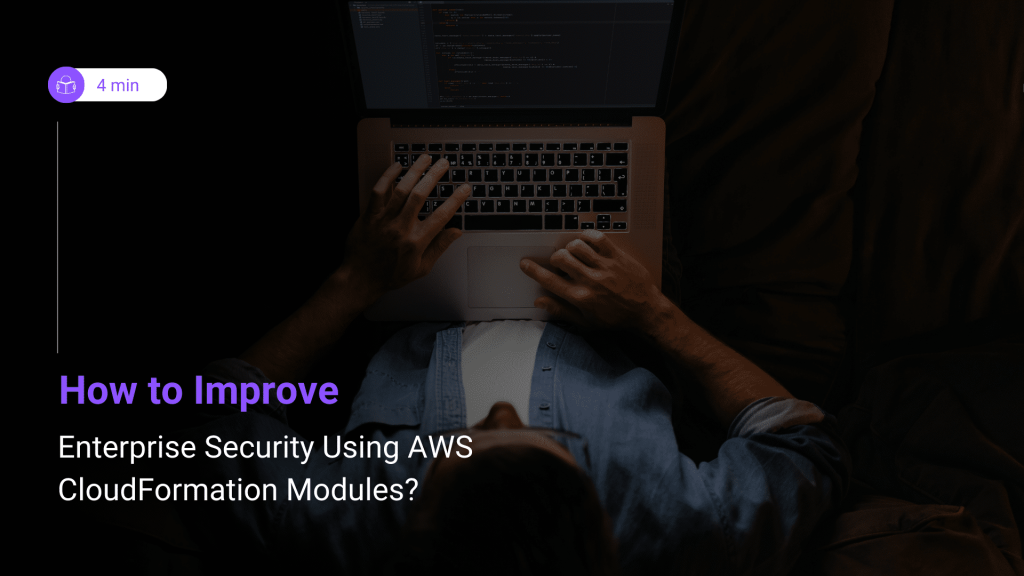The focus of today’s agile application development is on speed and adaptability. However, installing good security has been slow and inflexible. Security is a tough undertaking to automate or apply consistently by many people.
It’s even occasionally considered as a hindrance to code release. Perimattic is an AWS Service Provider that helps enterprise customers set up AWS CloudFormation Modules by delivering programs that migrate and modernize their workloads on Amazon Web Services (AWS).
Perimattic extensively uses Infrastructure as Code (IaC) and, in doing so, sees many security issues that create risk and technical debt because of engineers not having access to codified best practices.
This article examines how AWS CloudFormation Modules can address these issues while also increasing development speed. We’ll look at AWS Identity and Access Management (IAM) permissions and how to use AWS CloudFormation Modules to achieve the idea of least privilege.
AWS CloudFormation Modules
In November 2020, AWS launched CloudFormation Modules. These are a clear, controllable, and repeatable way to bundle resource configurations for inclusion across stack templates.
AWS CloudFormation Modules can encapsulate standard service configurations and best practices as modular, customizable building blocks for you to include in your stack templates.
They allow you to integrate resource settings in your templates that include best practises, expert subject knowledge, and established criteria.
Security, governance, and industry rules are all areas where these are useful. It is achievable without a thorough understanding of the complexities of resource implementation.
Benefits of CloudFormation Modules
● Predictability: Each module in the CloudFormation registry has a pre-defined schema. It guarantees that the same configuration will apply to the resources created each time a module is included in your template.
● Reusability: The same module can be used across multiple templates, regions, and accounts.
● Traceability: CloudFormation remembers which modules provisioned which resources in a stack, allowing you to quickly identify the source of resource changes.
● Manageability: Once a module has been registered, it can be managed using the CloudFormation registry.
How do AWS CloudFormation Modules work?
Modules are reusable building pieces that can be used in various CloudFormation templates and are used in the same way that native CloudFormation resources are. These components can create a single or several resources.
You can nest these building blocks into other modules to stack your best practises into higher-level building blocks. This means, for example, that you can write a module that defines your organization’s Lambda function specifications.
You can then consume that Lambda module in another module that defines your serverless Amazon API Gateway implementation patterns. The CloudFormation registry contains CloudFormation components.
You can utilise them just as a native resource from this registry. A module having a resource type, for example, is prefixed with ::MODULE in the CloudFormation registry. As a result, determining whether you’re utilising a module or a native registry resource is simple.
When using the ::MODULE resource type, parameters declared in the CloudFormation module become properties. When you utilise a CloudFormation module, the module template is expanded into the consuming template, allowing you to use a Ref or Fn::GetAtt to access the module’s resources.
Why is CloudFormation Good?
Early in their careers, developers learn that code reuse is beneficial; it keeps things consistent, removes unnecessary code, and saves time by not resolving problems that have already been resolved.
The infrastructure code is no exception. If the only value of CloudFormation Modules was code reuse, it would be a useful feature. Its ability to improve security makes it a fantastic feature.
Least privilege policies can be defined once and utilised across many teams and projects when applied to IAM policies. Because the developer didn’t know the specific permissions required by a position and was under time constraints, no more wildcards in IAM policies were used.
Consistency is the name of the game when it comes to installing security guardrails. So, if you can leverage least privilege IAM policies across different regions and accounts with very little code, executing your enterprise security plan becomes lot easier.
Use IAM to control access
IAM is an Amazon Web Services (AWS) solution that allows you to manage users and their permissions in AWS. You may use IAM with AWS CloudFormation, for example, to designate which AWS CloudFormation operations users can execute, such as accessing stack templates, creating stacks, and deleting stacks.
Anyone in charge of AWS CloudFormation stacks will need access to the resources within those stacks. Users must have access to call the required Amazon EC2 actions if they want to use AWS CloudFormation to launch, upgrade, or end Amazon EC2 instances.
In most circumstances, users need full access to a template’s resources in order to manage them. AWS CloudFormation performs calls on their behalf to create, edit, and delete such resources. Use a service role to divide permissions between a user and the AWS CloudFormation service.
Instead of using the user’s policy, AWS CloudFormation uses the service role’s policy to make calls. It will help you ensure enterprise security for your organization.
Conclusion
We believe this article to be a huge step forward for CloudFormation. Modules and StackSets, if taken full advantage of, could define security standards for code across entire organizations.
They can dramatically improve the organization’s security posture while also saving many developer hours. Your organization should modules to scale its best practices.
Perimattic expects that the community will provide CloudFormation modules that may be shared in public repositories. To improve business security, it would be beneficial if you implemented these modules.




